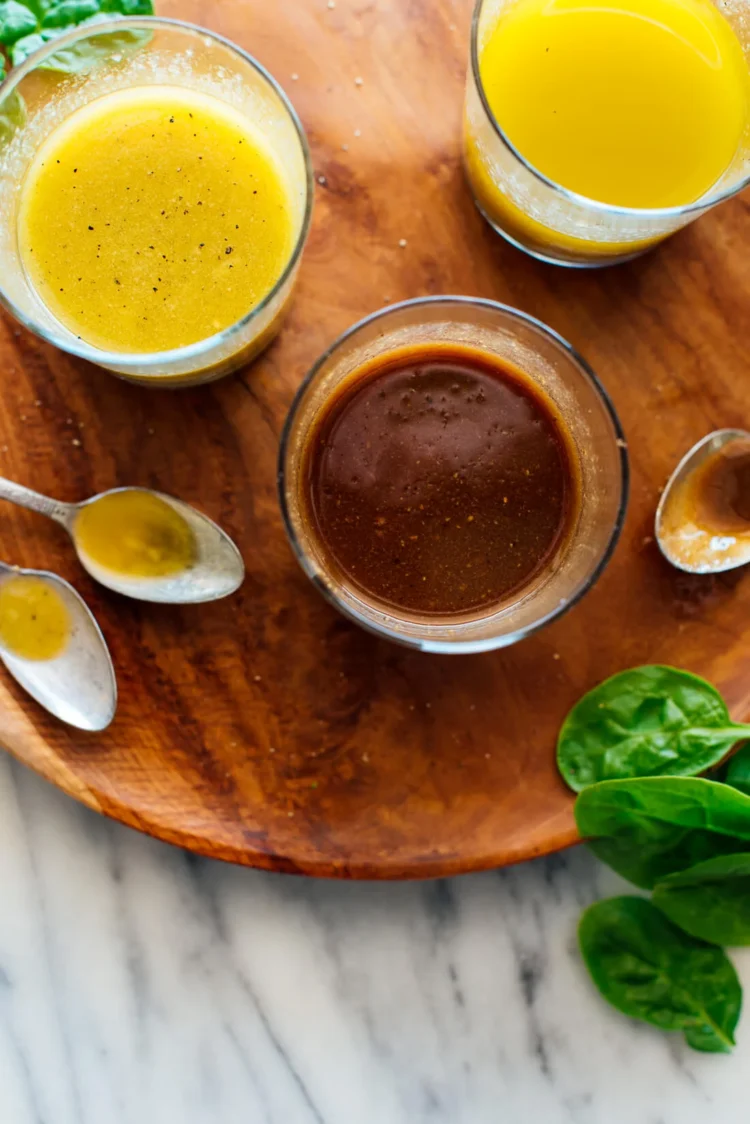A simple and delicious Vinaigrette recipe
Ingredients
- ½ cup extra-virgin olive oil
- 3 tablespoons vinegar of choice (balsamic vinegar, red wine vinegar, white wine vinegar)
- 1 tablespoon Dijon mustard
- 1 tablespoon maple syrup or honey (Creamed honey from Creston is delicious)
- 2 medium cloves garlic, pressed or minced
- ¼ teaspoon fine sea salt, to taste
- ¼ teaspoon ground black pepper, to taste
Directions
- In a liquid measuring cup or bowl, combine all of the ingredients. Stir well with a small whisk or a fork until the ingredients are completely mixed together.
- Taste, and adjust as necessary. If the mixture is too acidic, thin it out with a bit more olive oil or balance the flavors with a little more maple syrup or honey. If the mixture is a little blah, add another pinch or two of salt. If it doesn’t have enough zing, add vinegar by the teaspoon.
- Serve immediately, or cover and refrigerate for future use. Homemade vinaigrette keeps well for 7 to 10 days. If your vinaigrette solidifies somewhat in the fridge, don’t worry about it—real olive oil tends to do that. Simply let it rest at room temperature for 5 to 10 minutes or microwave very briefly (about 20 seconds) to liquify the olive oil again. Whisk to blend and serve.
Notes
- Balsamic vinegar: Makes a bold, slightly sweet dressing that is wonderful on green salads with fruit, such as apples, strawberries or peaches.
- Red wine vinegar: Packs a punch and works well with other bold flavors and bright veggies, like tomatoes, bell peppers, cucumber, cabbage and more (think Greek salads).
- White wine vinegar: This is a more mellow vinegar and it’s especially nice with more delicate flavors like cucumber and sweet corn. It’s lovely on just about every green salad out there.
- Greek/Italian variation: Use red wine vinegar. Add 1 to 2 teaspoons dried oregano and, optionally, a pinch of red pepper flakes.
Thanks to https://cookieandkate.com/how-to-make-vinaigrette-plus-variations/
